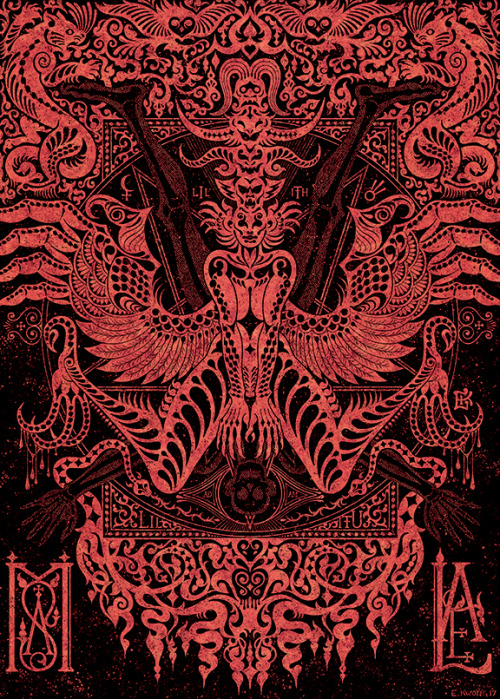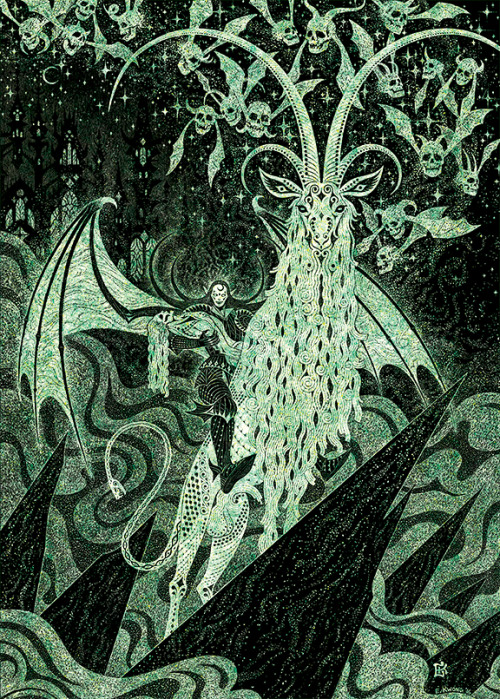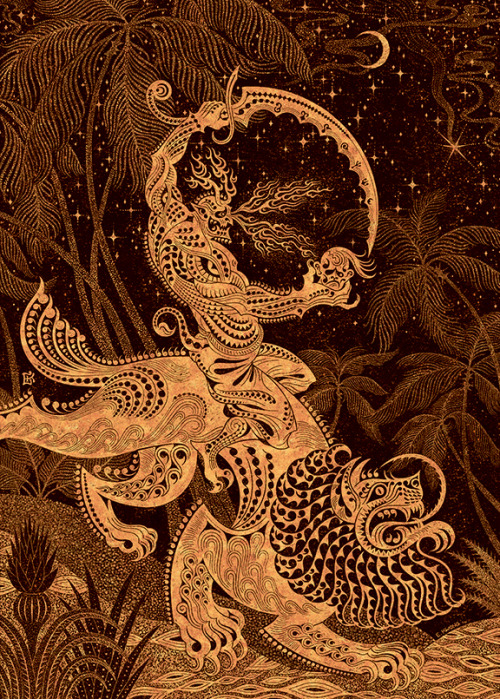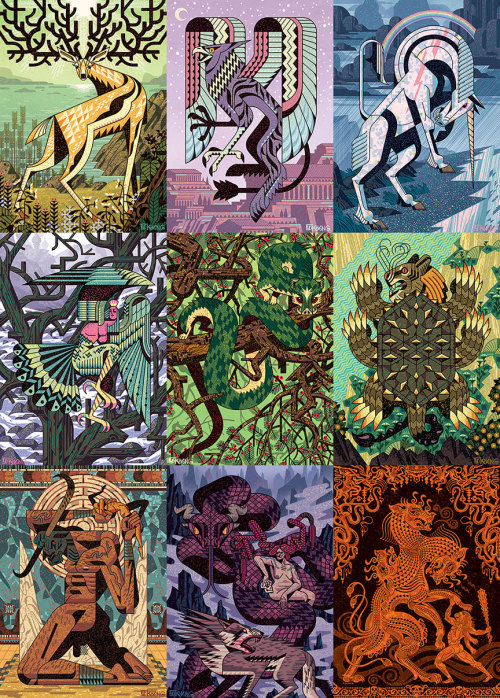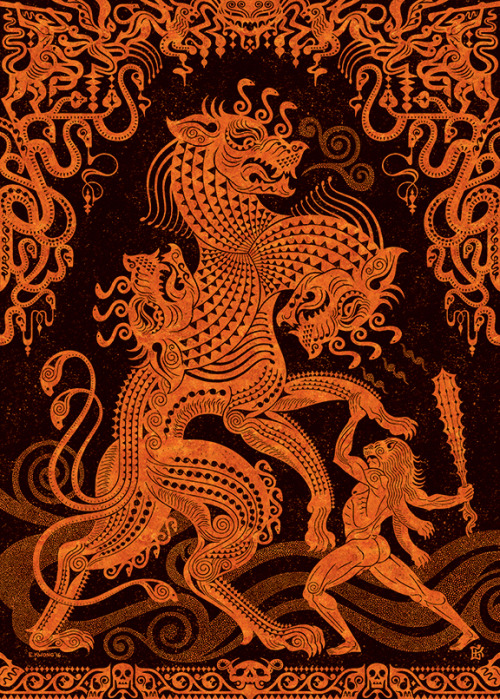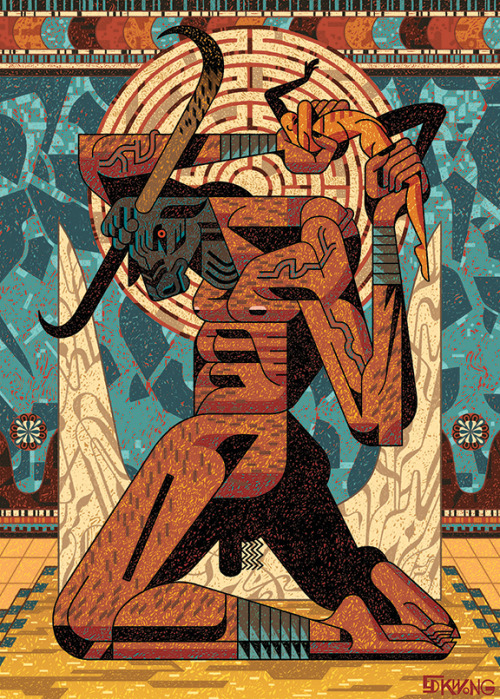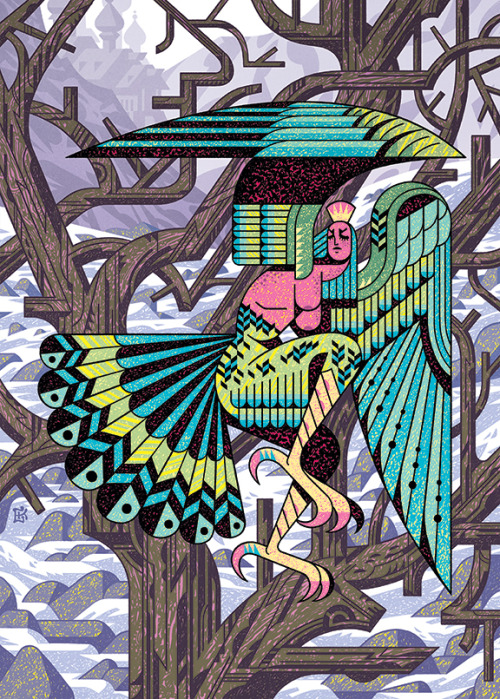#mademythos
Kappa
Lurking in the ponds and rivers of Japan, the Kappa lure in and drown those who venture too close to the waterfront. Kappa have a horrifying reputation for kidnapping, raping, and eating passersby, and they have a taste for human babies, horses, women, and cucumbers. They are able to leave their aquatic habitat, but must be careful whilst on dry land, for the source of the Kappa’s lifeforce rests upon their heads in the form of a wet bald spot or shallow indent filled with water; should it dry up or spill, their powers slip away and they die.
Post link
Lilin
The offspring of Lilith, the first wife of Adam, are known as lilin. They assume male and female form, as incubus and succubus respectively. Lilin are portrayed as both intoxicatingly attractive figures with ghastly deformations and ape-like demonic fiends - in all depictions, though, they possess unnaturally large and cold genitalia.
Manifesting at night, they seduce their sleeping victims within their dreams. In medieval European folklore, repeated bouts of unholy fornication with demons caused degraded physical and mental health, or ultimately death.
Post link
Chon Chon
Chon Chon is the name for the invisible flying metamorphosis of the vampiric Kalkus, nefarious sorcerers and witches within the mythology of the Mapuche (indigenous group found in south-central Chile and southwestern Argentina). After applying magical ointment to their throats, Kalkus are able to coax their heads from their necks and sprout a full complement of feathers and claws. Their ears grow to such gargantuan size that they can be used for flight.
Post link
Vampire
Vampires have less attractive origins in 18th Century Southeastern Europe than pop culture would have you believe. Folklore of the region described hungry revenants (evil individuals, witches, or suicide victims), cloaked in funeral shrouds with mouths and noses that trickled blood and distended bodies with skin that was dark crimson or even purple in complexion. Fangs were non-existent in historical legends, though being bitten was still an accepted method of becoming a member of the peckish undead.
Post link
Talos
Talos was a colossal automaton of bronze in ancient Greek mythology who was tasked with the protection of Europa, mother to King Minos. Talos diligently patrolled the perimeter of the island of Crete three times daily, hurling volleys of boulders at any would-be invaders brave enough to stray close. Whilst attempting to land the Argo upon the shores of the island, the sorceress Medea vanquished Talos by casting a spell that drove him to madness, causing him to pluck out the bronze nail from the vein that ran from his ankle to his neck, draining the molten ichor that gave him animation.
Post link
Jinn
According to Arabic and Islamic mythology, the Jinn are a caste of supernatural beings derived from fire or air, and only inferior to angels and devils. They are omnipresent inhabitants of inanimate objects and elemental forces, able to shapeshift into myriad forms including human, animal, and fantastical. Though undetectable by humans and metaphysical in nature, Jinn possess the ability to manipulate and interact with the physical world. They relish in petty revenges when slighted, sowing discord into people’s lives by causing chronic misfortune, baffling pain, and mental anguish.
Post link
Prints of these Made Mythos illustrations are now available for purchase at my Inprnt shop. https://www.inprnt.com/gallery/kwonger/
Post link
Cerberus
Hades wisely entrusted ferocious Cerberus to protect the gates to the underworld. Only mighty Heracles overcame the hellhound through godly strength and guile as the final and most difficult task of his twelve labours. After being dragged up to the surface through a cave and exposed to daylight, a violently agitated Cerberus vomited toxic froth onto nearby aconite plants (aka Wolf’s Bane). Legend has it that this toxic vomit is what made Wolf’s Bane poisonous.
Post link
Ramidreju
Born only once a century by weasel or marten, the ramidreju is a highly coveted creature from Spanish Cantabrian mythology whose fur is considered to be a panacea for every disease and ailment. Amongst its other valuable traits, it has a penchant for seeking out gold much like a truffle-sniffing pig does.
Post link
Loki’s Brood
The union of the god Loki and Angrboða, the giantess of Jotunheim, yielded a monstrous and malevolent trio. “The Midgard Serpent” Jörmungandr was a sea monster who grew so massive its body encircled the entire world from head to tail. Hel was the ruler of the Norse Underworld, which was notably also called Hel. Fenrir was a gigantic canine terror pre-ordained to bring about the end times by killing Odin during the time of Ragnarok.
Post link
Minotaur
The ancient Cretan Minotaur was a ravenous monstrosity who could only be sated with human flesh. At the behest of King Minos of Crete, a giant labyrinth was constructed to contain the man-bull. Athenian boys and girls were sacrificed to the Minotaur every nine years as tithe and tribute to the Cretan kingdom for a lost war. The Athenian hero Theseus eventually took it upon himself to traverse the Minotaur’s maze and slay the man-bull in order to stop the cycle of sacrifice.
Post link
Unicorn
In medieval European mythology, the unicorn was a wild enchanted animal with equine and caprine qualities - it was beautiful and pure, and only capable of being tamed by the chaste. Its horn offered magical medicinal qualities. Ancient Greeks believed it was a real animal - their natural history texts refer to multi-coloured single-horned animals (unicorns) that lived in distant unknown lands, such as India.
Post link
Tarasque
The Tarasque was part of local Christian myth in medieval Provence. This French hybrid beast killed passersby and sank boats, dwelling on a great rock in the middle of the river Rhône, on the very site of today’s Chateau Tarascon. The terrible monstrosity was not vanquished by the best of medieval military might, but rather charmed by the religious word and song of Saint Martha, who led the beguiled Tarasque into the city where it perished without resistance at the hands of fearful townspeople.
Post link
Alkonost
The Alkonost of Russian folklore (not to be confused with Gamayun) are serene beings of beauty, renowned for their otherworldly voices and spellbinding melodies. Their songs entrance listeners much like the Greek sirens, who were originally depicted as half-woman, half-fish and altogether understood to be much more hazardous to humankind. There is speculation as to the origin of the name Alkonost - perhaps it comes from the mythical Greek figure Alcyone, who was transformed into a kingfisher by the gods.
Post link
Ceryneian Hind
The Ceryneiean or Golden Hind was the sacred animal of Artemis, the ancient Greek goddess of the hunt, virginity, flora, and fauna. So powerful and swift was it that it was faster than any arrow let loose and almost invincible. The Hind was finally captured by the demi-god Heracles as part of his twelve labours of penance.
Post link
Griffin
Griffins were symbols of guardianship and celestial power during times of antiquity. In ancient Greece and Rome, their fiercely protected burrowed nests were believed to contain coveted deposits of gold nuggets. The griffin’s talons and feathers offer healing attributes, including the ability to cure blindness.
Post link
Sasquatch
Some believe that the uncannily huge footprints discovered in the wilderness of North America, particularly concentrated in the Pacific Northwest, are left behind by the Sasquatch (AKA “Bigfoot”). Its origins are thought to have roots in Indigenous folklore but over time, its legend has been bolstered by unsubstantiated stories of sightings by settlers, loggers, and cryptozoological enthusiasts alike.
Post link
Leviathan
If Behemoth’s domain is the land, then Leviathan is the supreme monster of the sea from the Old Testament. In Jewish lore, both creatures will be slain by the might of God at the end of time and their bodies will be used to provide sustenance and shelter for the righteous.
“Who can open the doors of his face? His teeth are terrible round about.
His scales are his pride, shut up together as with a close seal. One is so near to another, that no air can come between them. They are joined one to another, they stick together, that they cannot be sundered. By his neesings a light doth shine, and his eyes are like the eyelids of the morning. Out of his mouth go burning lamps, and sparks of fire leap out.” (Job 41: 14-19 KJV)
Post link
Bake-danuki
Bake-danukis are cheerful and supernatural tanukis (raccoon dogs) from Japanese folklore. These shapeshifting creatures are auspicious: since they have eight disguises, they are associated with the number eight, which is lucky in many Asian cultures. Though bake-danukis are symbols of good fortune and playfulness, they can be impish, taking great pleasure in tricking people and making them appear foolish. One of the bake-danuki’s most notable features is its oversized scrotum, able to expand cartoonishly in size and shape for myriad uses. This magical scrotum becomes a raft for traversing water, a net for capturing fish and birds, and a sheet that shields the bake-danuki against the elements.
Post link
Cipactli
According to Aztec mythology, the earth was created from the enormous body of the Cipactli, a primordial sea monster with attributes of a caiman, a toad, and a fish. Its hunger was so insatiable that it had ravenous mouths on all of its joints. The deity Tezcatlipoca (”Smoking Mirror”) captured the hungry beast by sacrificing his foot as bait. With the help of Quetzalcoatl (“Feathered Serpent”), the Cipactli’s body was torn asunder and re-molded into the vast terrain of the world.
Post link


